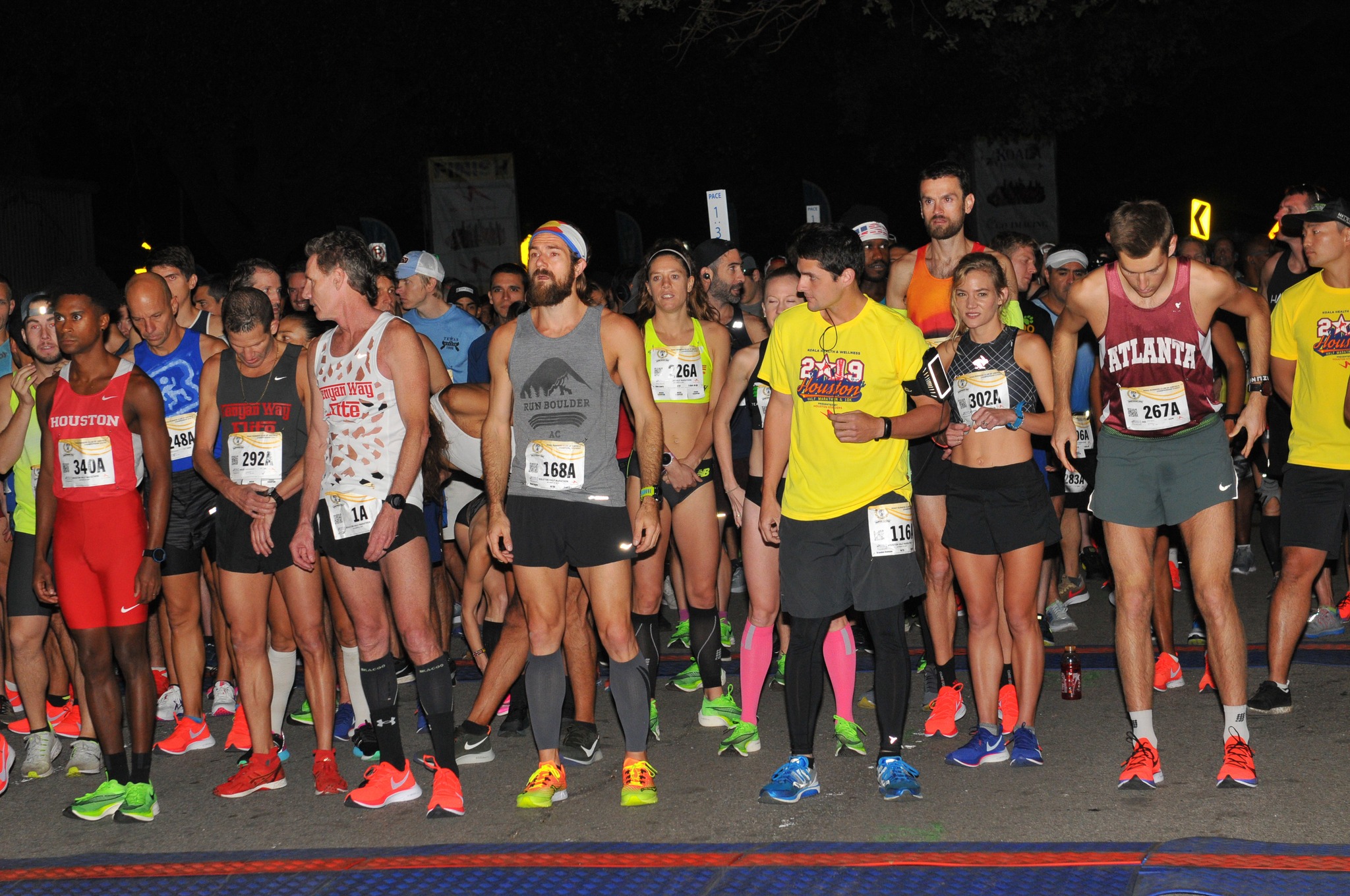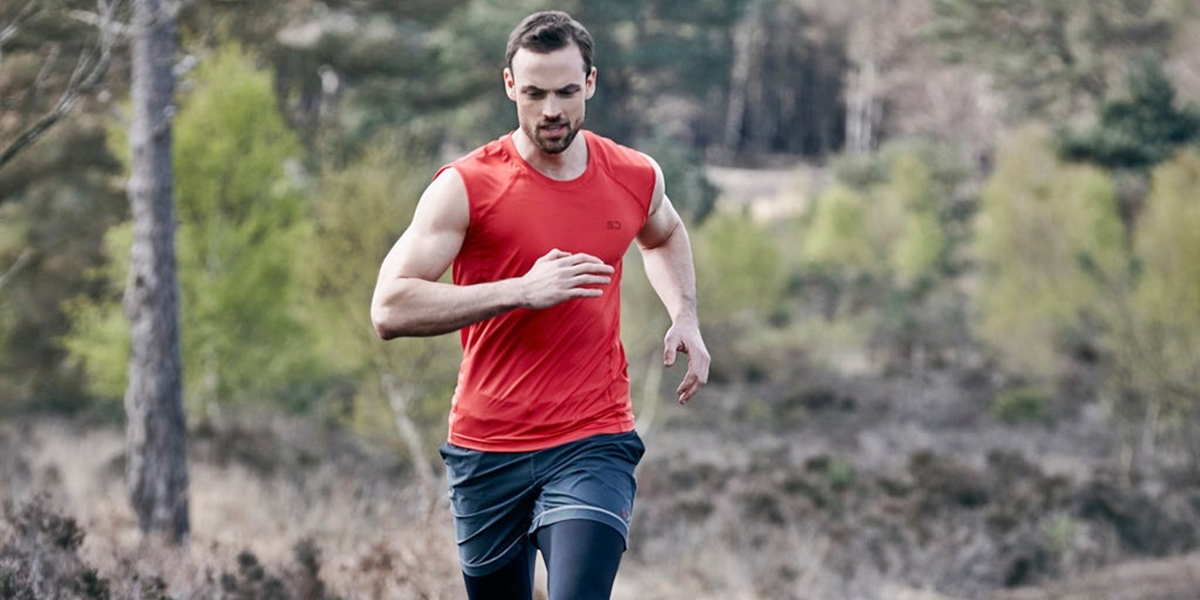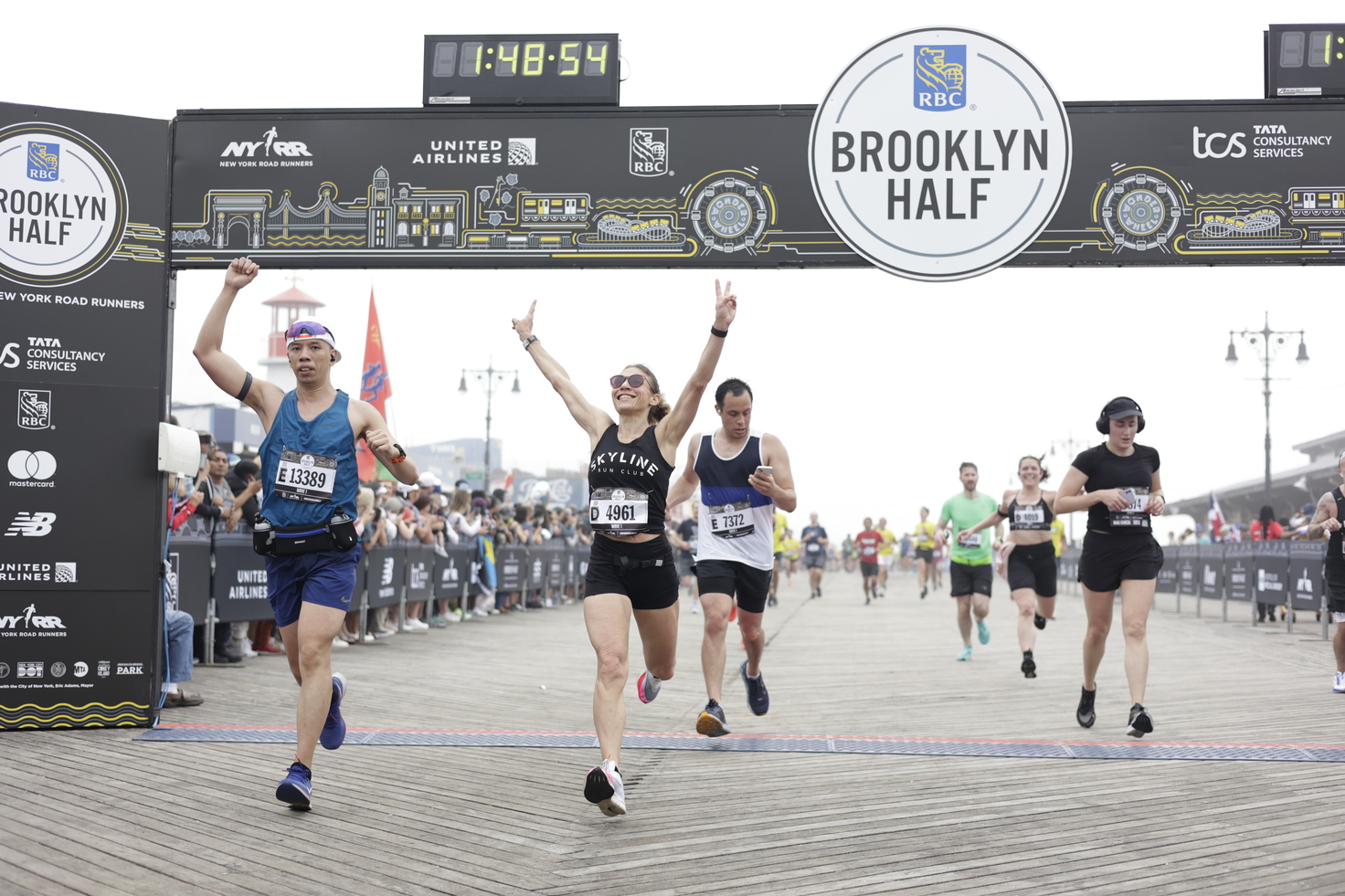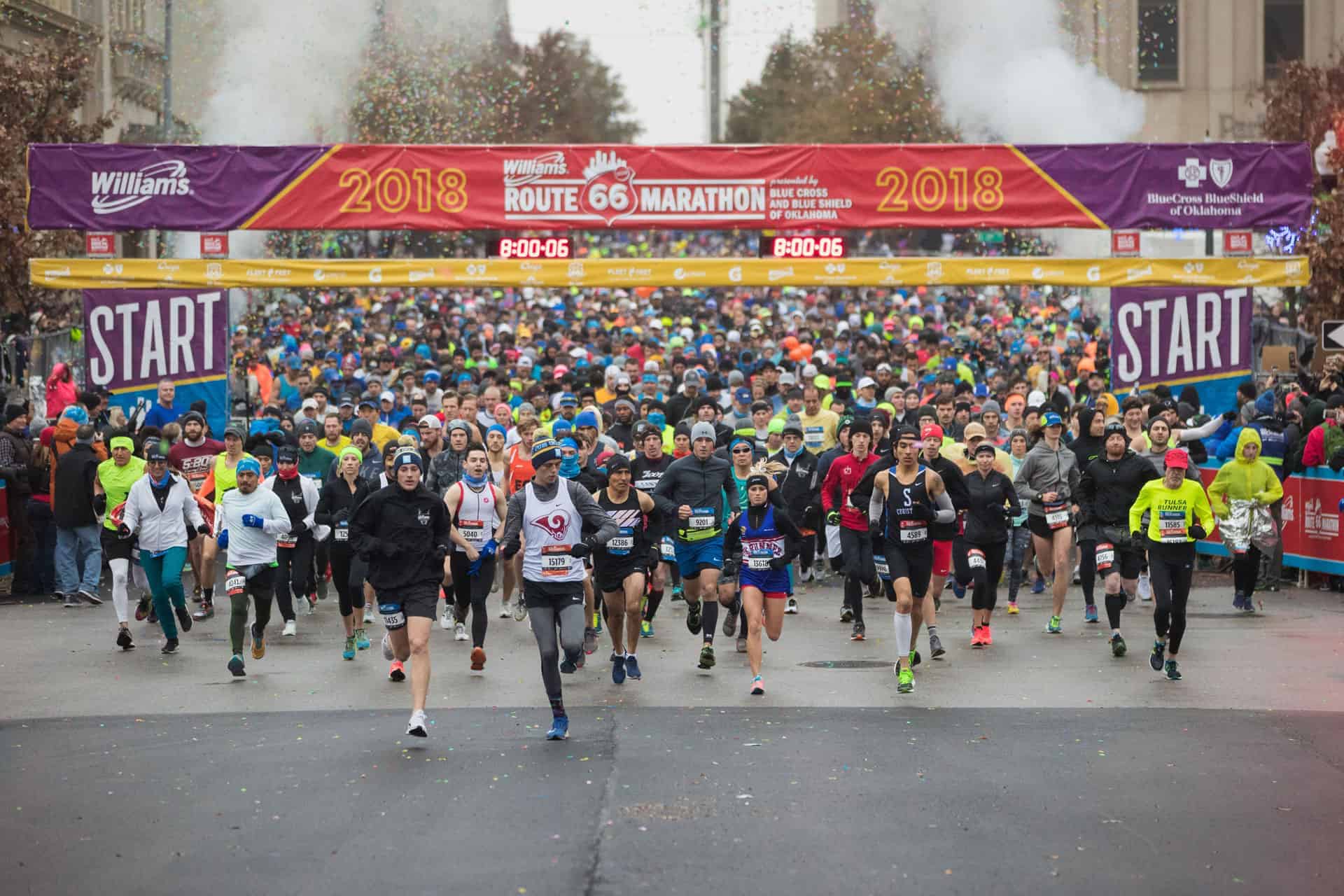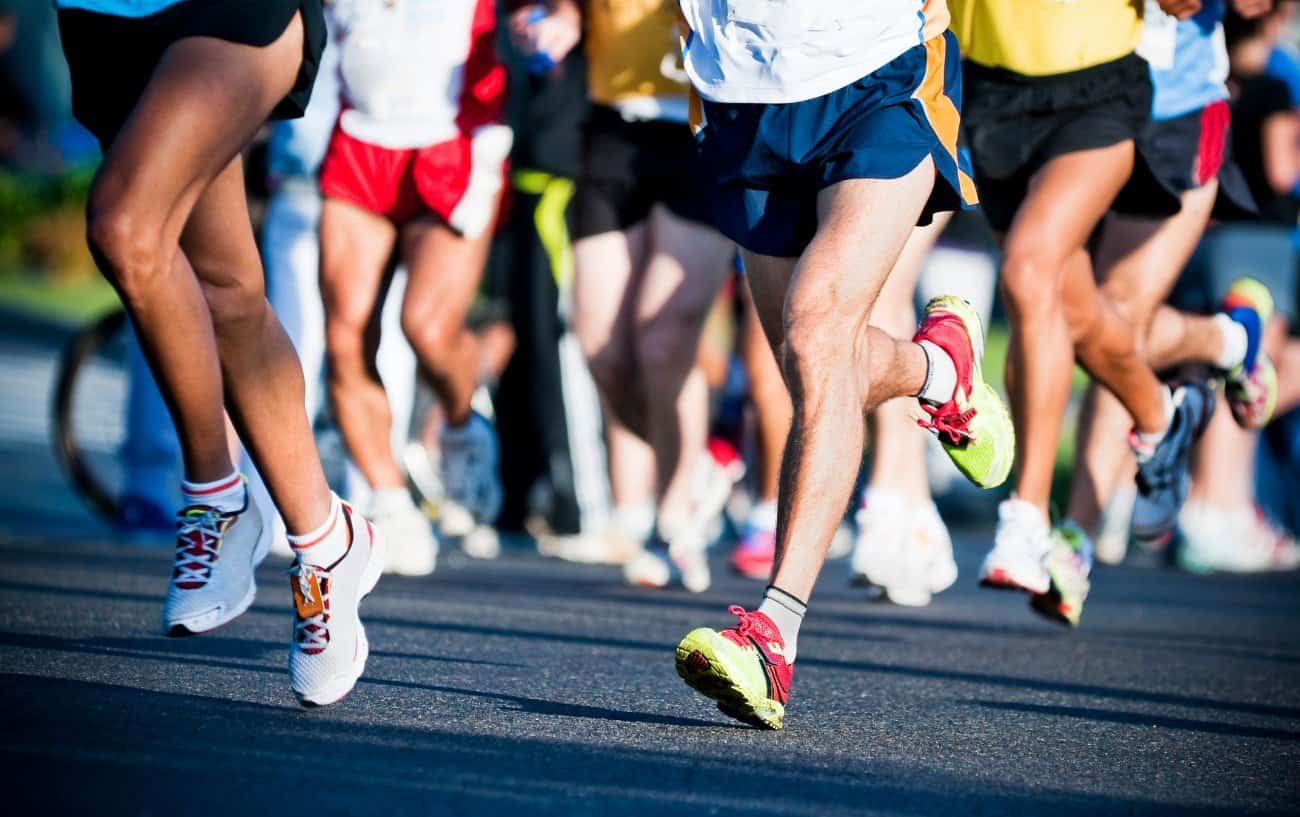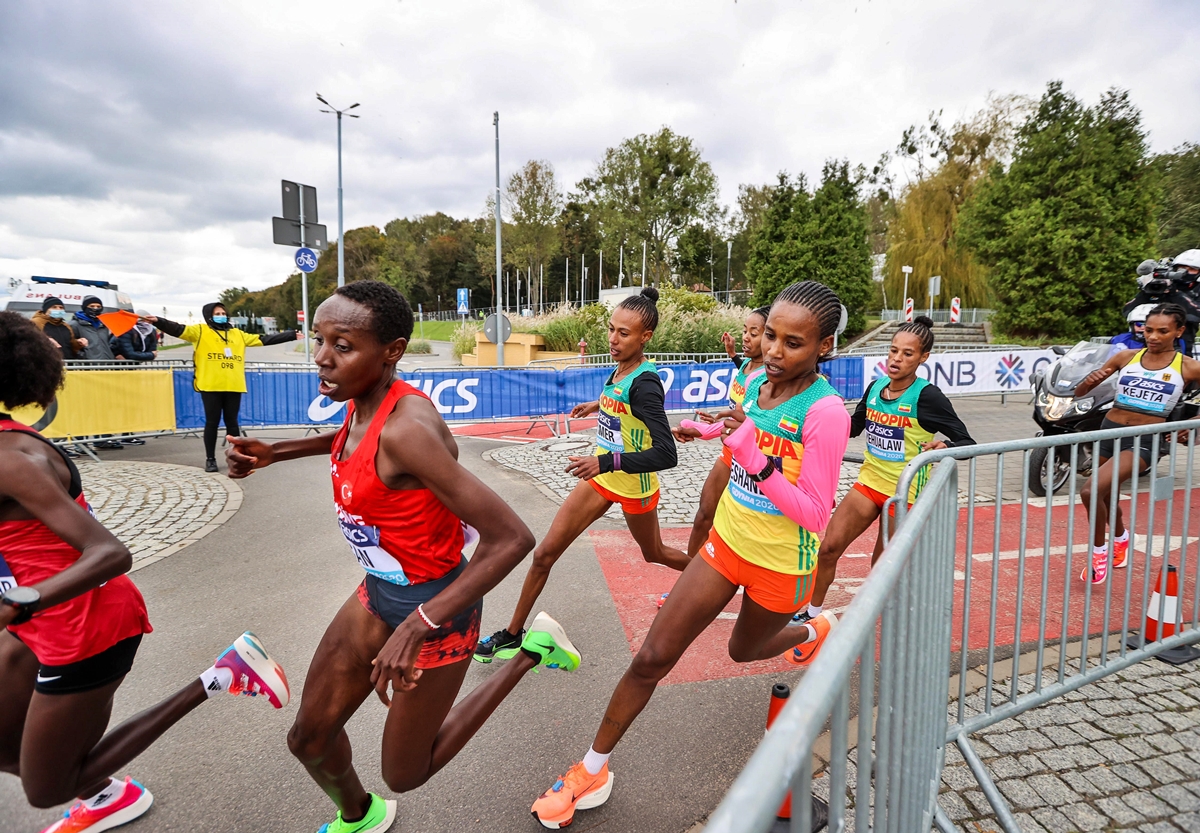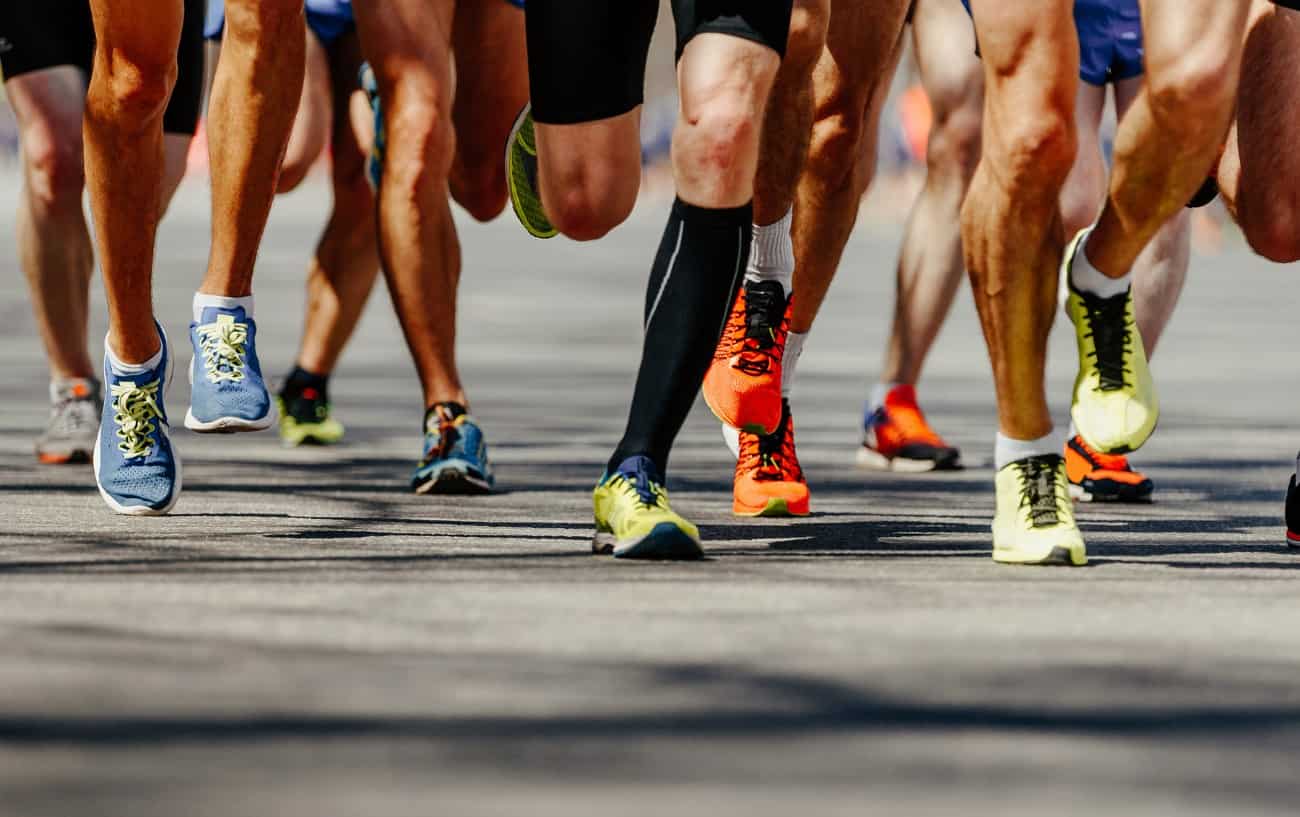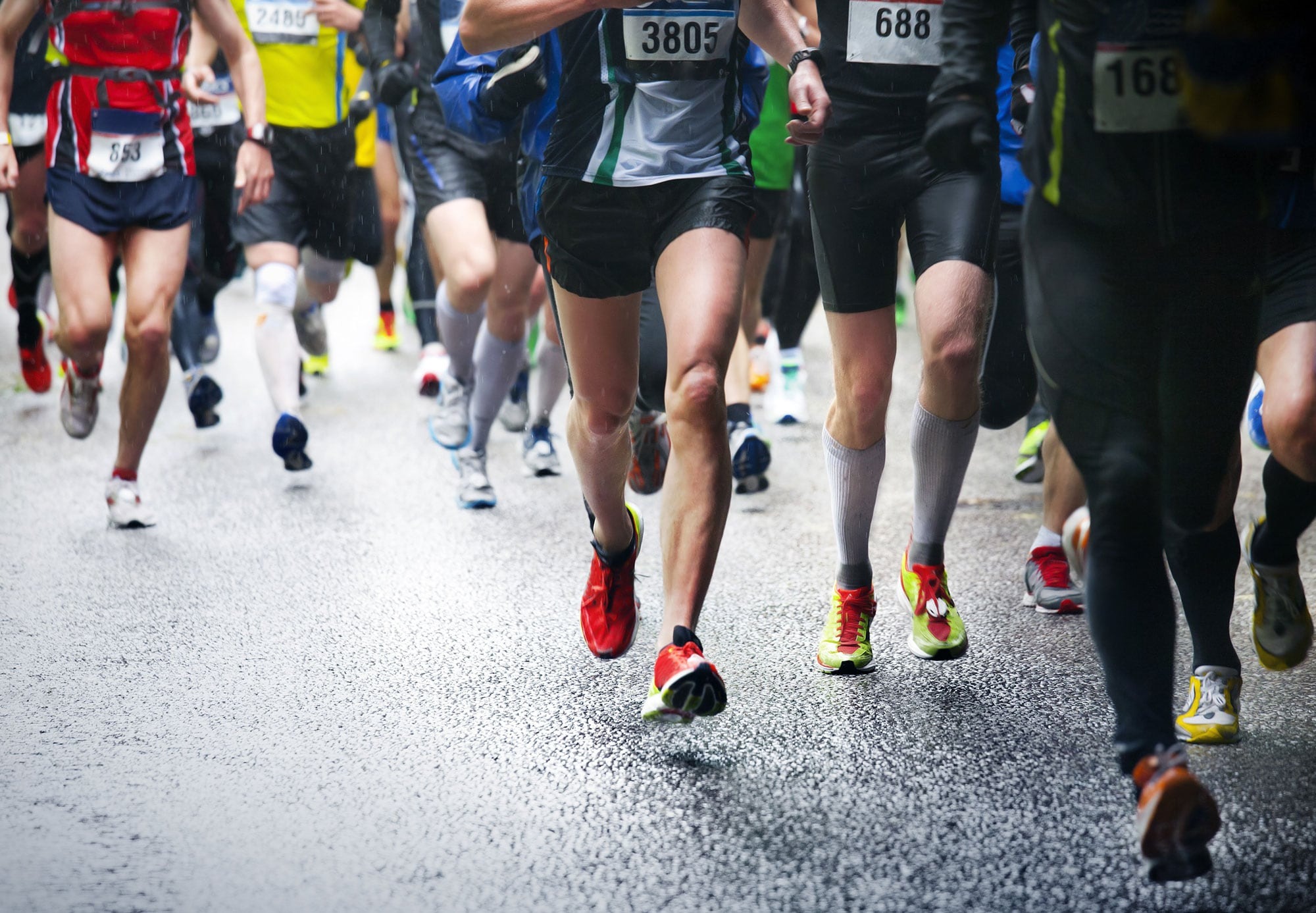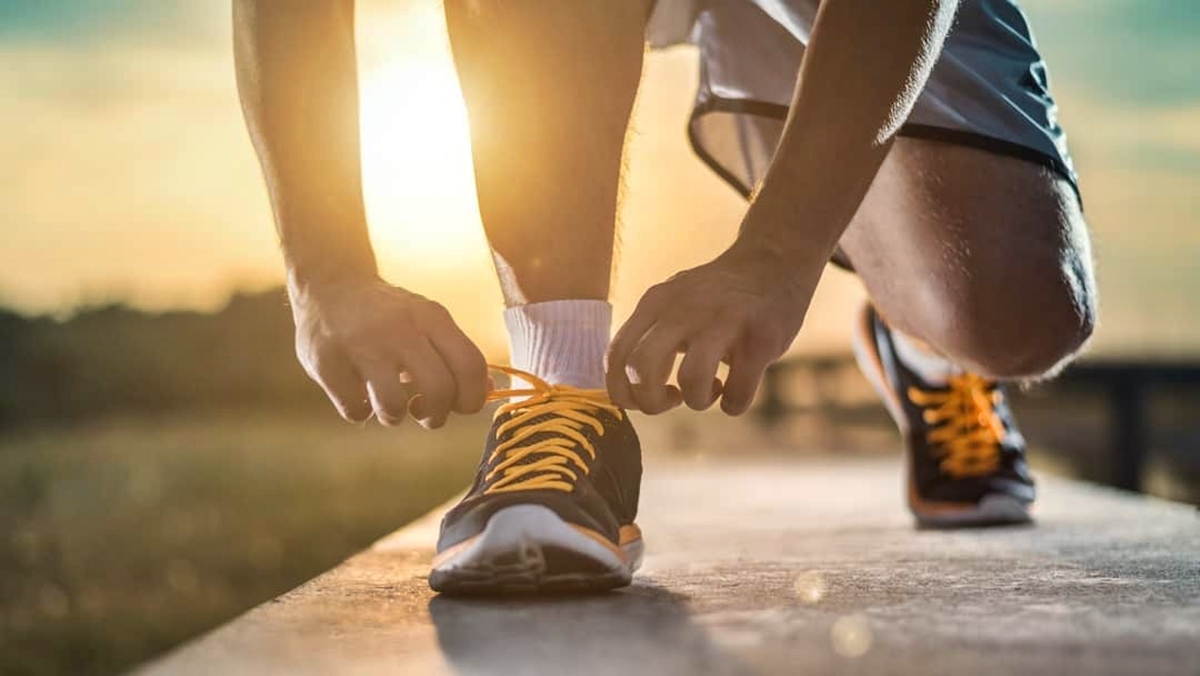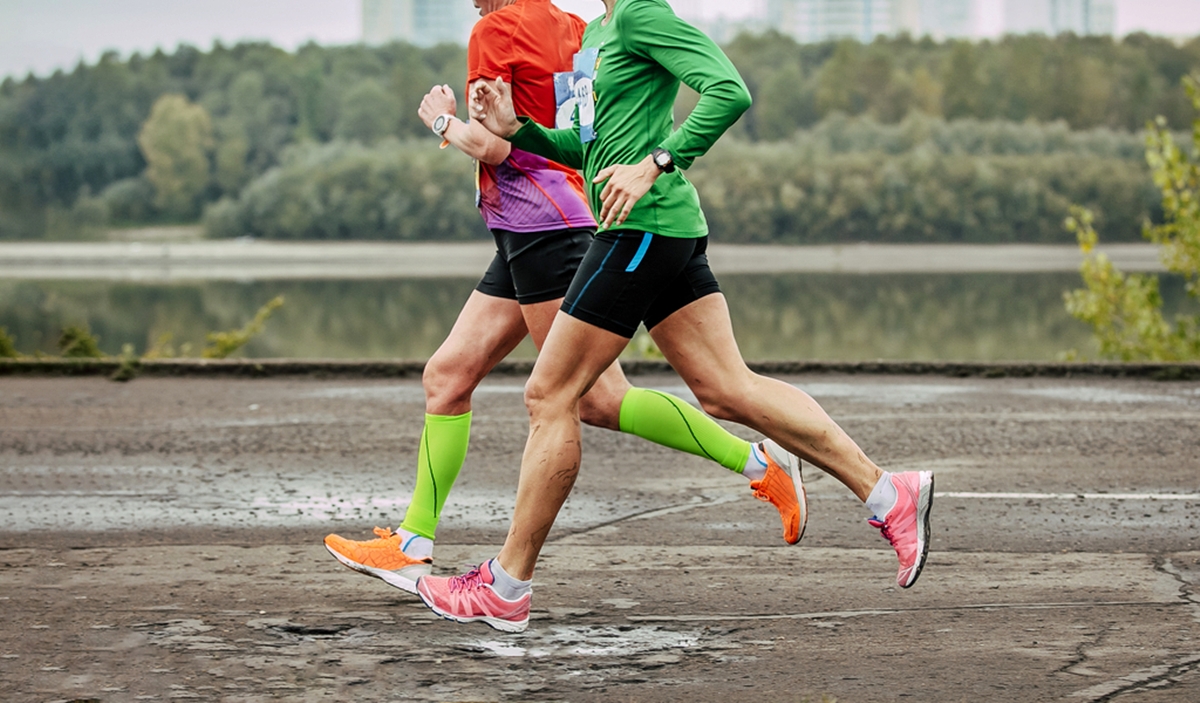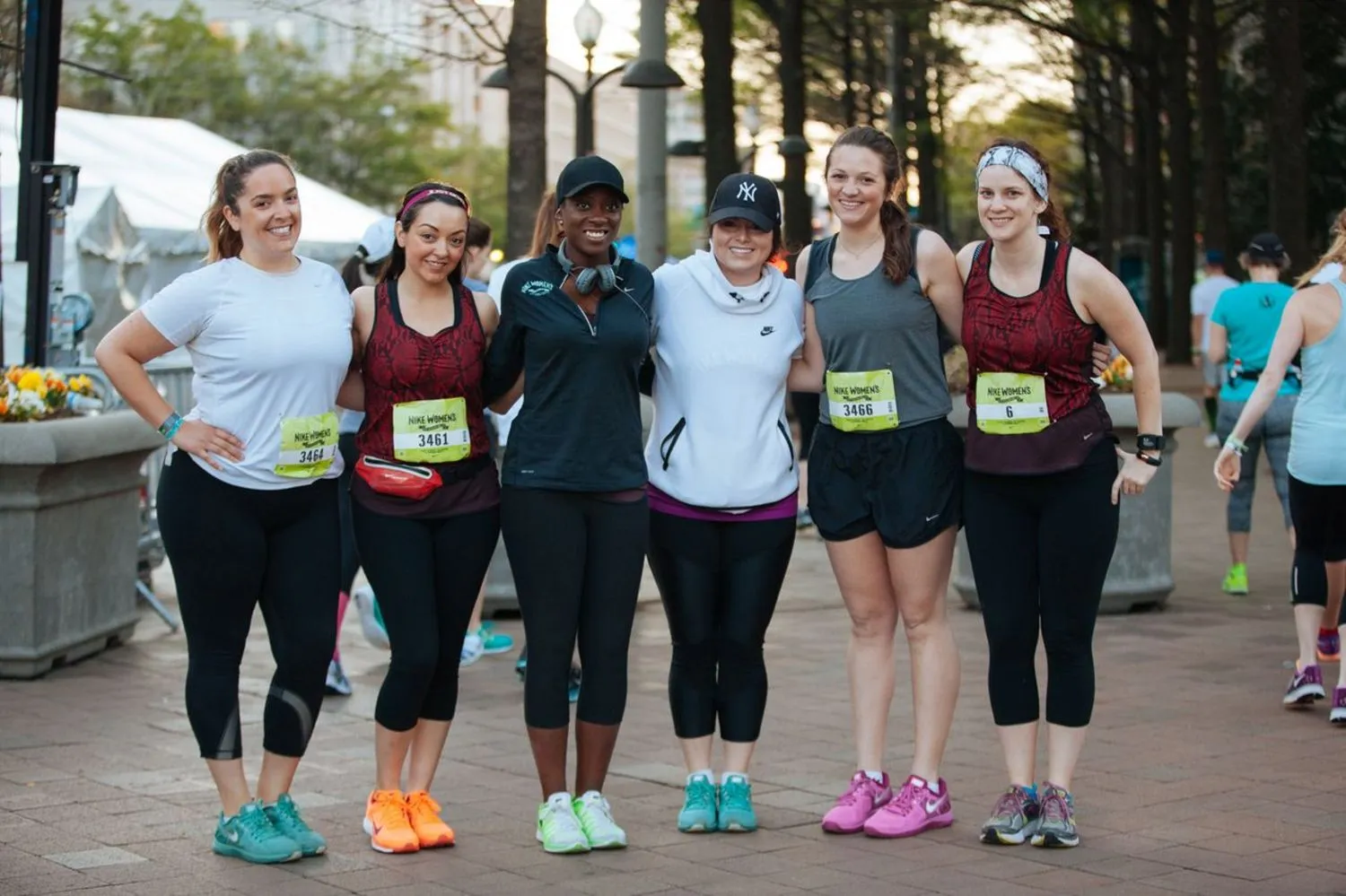

Featured
What To Wear For A Half Marathon
Modified: October 24, 2023
Discover the best featured outfits for your upcoming half marathon. Find the perfect attire to enhance your performance and comfort.
Introduction
Welcome to the exhilarating world of half marathons! Whether you’re a seasoned runner or new to the sport, participating in a half marathon is an amazing achievement and a great way to challenge yourself physically and mentally. As you embark on your training journey, it’s important to not only focus on your running techniques but also pay attention to what you wear.
Choosing the right attire for a half marathon can make a significant difference in your comfort, performance, and overall experience. From shoes to socks, clothing to accessories, each element plays a crucial role in ensuring that you stay comfortable, protected, and able to give your best on race day.
In this article, we will explore the various aspects of selecting the ideal attire for a half marathon. We’ll cover everything from footwear to safety gear, helping you make informed choices that will optimize your performance and enhance your enjoyment of the race.
Remember, finding the perfect outfit for a half marathon is a personal experience, and what works for one person may not work for another. It’s essential to consider your own preferences, running style, and the weather conditions on race day. With that in mind, let’s dive into the world of half marathon attire and discover what you need to wear to excel in your upcoming race.
Choosing the Right Shoes
Selecting the right shoes for your half marathon is crucial to ensure a comfortable and injury-free run. With the wide array of options available, it’s essential to consider several factors before making your purchase.
The first step is to determine your foot type. Are you an overpronator, with your foot rolling inward excessively, or do you have a neutral stride? Knowing your foot type will help you choose shoes with the appropriate level of stability and support.
Next, consider the terrain on which you’ll be running. If your race takes place on roads or paved surfaces, opt for road running shoes that provide cushioning and shock absorption. For trail races, trail running shoes with additional traction and stability are recommended to navigate uneven terrain effectively.
Additionally, it’s crucial to find shoes that fit your feet well. Make sure there is ample space in the toe box to prevent blisters and allow for natural foot movement. Try on shoes at the end of the day when your feet are slightly swollen, as this is when they are at their largest.
Visit a specialty running store where knowledgeable staff can analyze your gait and recommend the best shoes for your individual needs. They may also suggest custom insoles or orthotics to address any specific foot issues you may have.
Don’t forget to break in your new shoes before race day. Gradually increase your mileage in them during training to allow your feet to adjust and to identify any potential discomfort or fit issues.
Remember, your shoes are your most critical piece of equipment for a half marathon. Investing in a high-quality pair that fits well and suits your running style will ensure a comfortable and enjoyable race day experience.
Selecting Moisture-Wicking Clothing
Moisture-wicking clothing is essential for a half marathon as it helps regulate your body temperature and keeps you dry and comfortable throughout the race. When choosing your running attire, opt for fabrics that have moisture-wicking properties, such as polyester blends or synthetic materials like nylon or spandex.
Moisture-wicking fabrics work by pulling sweat away from your skin and onto the surface of the fabric, where it can evaporate quickly. This helps to prevent excessive sweating and discomfort, especially during longer runs and hot weather conditions.
In addition to moisture-wicking properties, look for clothing that offers breathability and ventilation. Mesh panels, strategic vents, or even a lightweight design can enhance airflow and keep you cool during your half marathon. This is particularly important for races held in warmer climates or during the summer months.
When it comes to tops, consider sleeveless or short-sleeved options for maximum airflow. Avoid cotton materials as they tend to absorb moisture, leaving you feeling heavy and damp. Instead, choose lightweight, quick-drying fabrics that will help you stay comfortable and focused on your run.
For bottoms, opt for moisture-wicking shorts or leggings that offer freedom of movement. Look for ones with built-in liners or briefs to minimize chafing. If you prefer looser fitting bottoms, ensure that they have an adjustable waistband to accommodate a secure and comfortable fit.
Remember to dress appropriately for the weather conditions on race day. Layering is key, especially if the temperatures are expected to change throughout the race. Start with a moisture-wicking base layer, then add or remove layers as needed.
Lastly, don’t forget about accessories such as moisture-wicking socks and a well-fitting sports bra. These items are equally important in providing comfort and preventing chafing or irritation during your half marathon.
By selecting moisture-wicking clothing that allows for optimal breathability and freedom of movement, you’ll be able to focus on your performance and enjoy your race without the distraction of discomfort or excessive sweating.
Layering for Varying Weather Conditions
When it comes to half marathons, weather conditions can vary greatly. It’s essential to be prepared for anything Mother Nature throws at you by layering your clothing appropriately. Layering allows you to regulate your body temperature and stay comfortable throughout the race, regardless of whether it’s hot, cold, or somewhere in between.
Start with a moisture-wicking base layer that fits snugly against your skin. This layer should be lightweight and designed to keep you dry by wicking away sweat. It acts as your first line of defense against moisture and helps to regulate your body temperature.
Next, consider adding a middle layer for insulation. This layer should provide warmth while still allowing moisture to escape. Depending on the weather conditions, this layer can be a long-sleeved shirt, a lightweight jacket, or a fleece pullover. Look for materials that are breathable and provide a good balance between insulation and weight.
The outer layer is your shield against wind, rain, or snow. Choose a jacket or shell that is waterproof and wind-resistant to protect you from the elements. Look for options with sealed seams and adjustable hoods and cuffs to provide maximum protection. If you anticipate heavy rain or snow, consider a jacket with a built-in hood or packable rain cover.
It’s important to remember that during a race, your body will generate heat, so layering too heavily can lead to overheating. As a general rule, dress as if it’s 10 to 20 degrees warmer than the actual temperature to account for the heat you’ll create while running. It’s better to feel a little cool at the start than to risk overheating during the race.
If you anticipate significant temperature changes throughout the race, opt for layers that are easy to remove and tie around your waist or store in a race pack. This way, you can quickly adjust your clothing as needed without interrupting your stride.
Ultimately, it’s important to stay adaptable and monitor your body temperature throughout the race. If you find yourself getting too warm, remove a layer or unzip your jacket to allow for better ventilation. If you’re feeling chilled, add a layer or zip up your jacket to retain heat.
By layering your clothing appropriately, you’ll be ready to tackle any weather conditions that come your way during your half marathon, ensuring that you stay comfortable and perform at your best.
Finding the Perfect Socks
When it comes to running a half marathon, finding the perfect pair of socks may seem like a minor detail, but it can make a significant difference in your comfort and performance. The right socks can help prevent blisters, provide cushioning, and keep your feet dry throughout the race.
One of the most crucial factors to consider when choosing running socks is their material. Avoid cotton socks as they tend to retain moisture and can cause friction, leading to blisters. Instead, opt for socks made from moisture-wicking materials such as polyester, nylon, or a blend of synthetic fibers. These materials help to keep your feet dry by pulling moisture away from the skin.
Look for socks with seamless construction to minimize the risk of rubbing and irritation. Flat, smooth seams reduce friction and prevent chafing during long runs. Additionally, consider socks with cushioning in key areas, such as the heel and forefoot, to provide extra support and absorb impact as you pound the pavement.
The height of the socks is another aspect to consider. Some runners prefer ankle socks, while others opt for crew-length socks that cover the calf. The choice depends on personal preference and can be influenced by factors such as weather conditions and running style. Make sure the socks fit snugly but not too tight to avoid restricting blood flow.
It’s essential to try on different brands and styles of socks before race day to determine what works best for you. Pay attention to how the socks feel when you put on your running shoes and go for a short run to test their performance. Everyone’s feet are different, and what works for one person may not work for another.
Lastly, consider investing in a few pairs of quality running socks. Having multiple pairs allows you to rotate them during training and ensures that you always have a clean, dry pair ready for race day. Avoid running your half marathon in brand new socks, as they may have rough spots or fit issues that could lead to discomfort or blisters.
Remember, your feet endure countless impacts and friction during a half marathon. By choosing the right socks, you can minimize the risk of blisters, keep your feet dry and comfortable, and fully enjoy the experience of running your race.
Optimal Accessories for Comfort and Performance
While the right clothing and shoes are essential for a half marathon, it’s important not to overlook the impact that accessories can have on your comfort and performance during the race. From head to toe, these additional items can make a significant difference in your overall experience.
One of the most important accessories for a runner is a well-fitting and supportive sports bra for women. Choose a bra that provides the right level of compression and ensures minimal movement during your run. Consider factors such as adjustable straps, moisture-wicking fabric, and adequate support for your specific needs.
A running belt or waist pack is another valuable accessory that can enhance your race experience. These lightweight and compact accessories allow you to carry essentials such as energy gels, keys, or your phone without weighing you down. Look for belts with secure pockets, adjustable straps, and reflective elements for added safety.
If you’re running in sunny conditions, a hat and sunglasses are essential accessories to protect your eyes and face from the sun’s harmful rays. Choose a lightweight and breathable hat that provides shade and has built-in sweat-wicking technology. Look for sunglasses with UV protection and a comfortable fit that doesn’t slip or bounce during your run.
Another accessory that can improve your performance and comfort is a running watch or fitness tracker. These devices allow you to track your pace, distance, and heart rate, providing useful data to help you pace yourself and monitor your progress during the race. Look for a watch with GPS capabilities and customizable settings to suit your individual needs.
Don’t forget about the importance of hydration during your half marathon. Investing in a hydration pack or belt allows you to carry water or sports drinks without disrupting your rhythm. Look for packs with adjustable straps, multiple pockets, and easy-to-use hydration systems to keep you hydrated and energized throughout the race.
Lastly, consider the need for additional safety accessories, especially if you’re running in low light conditions or at night. Reflective clothing or accessories, such as vests, arm bands, or shoe lights, make you more visible to drivers and other runners. Safety should always be a top priority during races.
By selecting the right accessories to meet your personal needs, you can enhance your comfort, performance, and overall enjoyment of your half marathon experience. Take the time to experiment with different options during your training runs to find the optimal combination that works best for you.
Safety Gear and Reflective Clothing
When it comes to running a half marathon, safety should always be a top priority. As you prepare for your race, it’s essential to consider the necessary safety gear and reflective clothing to ensure your visibility and protect yourself while on the course.
One of the most important safety accessories is a reflective vest or belt. These items are designed to make you more visible to drivers, especially if you’re running early in the morning or during low-light conditions. Look for vests or belts that are lightweight, adjustable, and have reflective strips or panels to maximize visibility.
In addition to reflective vests, there are other reflective accessories you can consider, such as arm bands, ankle bands, or shoe lights. These additions can further enhance your visibility and ensure that drivers can see you from all angles. They are especially useful if you prefer not to wear a large reflective vest but still want to prioritize safety.
Another crucial piece of safety gear is a headlamp or a wearable light. These hands-free lighting options are ideal for late-night or early morning runs when visibility is limited. Look for lights that provide a bright and focused beam, adjustable straps, and long battery life to ensure you can see the path ahead and remain safe.
If you’re running in areas with heavy traffic, consider using a personal alarm or whistle. These small, portable devices can help attract attention if you find yourself in an emergency situation. They serve as an additional safety measure and can provide peace of mind as you embark on your race.
Lastly, it’s important to run with your ID and emergency contact information. You can use a running identification tag or carry a small card in your pocket or sports armband. This information is crucial in case of any unforeseen medical issues or emergencies.
Remember, safety should be a priority throughout your race training and on race day. Take the time to assess the potential risks and invest in the necessary safety gear and reflective clothing to protect yourself and ensure your visibility to others.
By prioritizing safety and employing these necessary precautions, you can enjoy your half marathon with the peace of mind that you’ve taken the necessary measures to keep yourself safe on the course.
Hydration Packs and Belts
Staying hydrated during a half marathon is crucial for maintaining your performance and preventing dehydration. Carrying water or sports drinks with you throughout the race can make a significant difference in your comfort and overall performance. Hydration packs and belts are popular accessories that allow you to conveniently carry fluids with you.
Hydration packs are backpack-style systems that typically feature a reservoir (bladder) for storing water and a drinking tube with a bite valve for easy access. These packs are lightweight, adjustable, and designed to fit snugly against your back to minimize bouncing during your run. Look for packs with multiple pockets for storing other essentials, such as energy gels, keys, or a phone. Ensure that the drinking tube is easily accessible and the reservoir is easy to fill and clean.
Hydration belts, on the other hand, are waist packs that come with multiple small bottles or flask holders. These belts have adjustable straps and pockets to accommodate your hydration needs and any additional items you want to carry. The bottles are typically angled for easy access and often come with a snap-on or screw-on lid for convenience. Look for belts that sit comfortably on your hips without bouncing or creating discomfort.
When choosing between a hydration pack or belt, consider your personal preference and running style. Some runners prefer the hands-free convenience of a hydration pack, while others prefer the simplicity and accessibility of a hydration belt. It’s also essential to consider the amount of hydration you’ll require during your race and how frequently you’ll need to refill or replenish your fluids.
Regardless of the option you choose, it’s crucial to practice using your hydration system during your training runs. Get familiar with the drinking tube or bottle placement to ensure quick and easy access while on the move. Experiment with different amounts of fluid and find the right balance that keeps you properly hydrated without causing discomfort or excessive weight.
Remember, staying hydrated throughout your race is essential for maintaining your energy levels, preventing cramps, and avoiding the risks of dehydration. Find the hydration system that works best for you and make it a staple accessory for all your half marathons.
Hat and Sunglasses for Sun Protection
When participating in a half marathon, protecting yourself from the sun’s harmful rays is not only important for your comfort but also for your long-term health. Wearing a hat and sunglasses can provide essential sun protection and enhance your overall race experience.
A hat is a crucial accessory to shield your face, scalp, and eyes from direct sunlight. Look for a lightweight and breathable hat that provides ample coverage, such as a cap with a wide brim or a visor. Choose one made from moisture-wicking materials that can keep sweat away from your forehead and provide ventilation to keep you cool.
Depending on the weather conditions and your personal preference, you can opt for a hat with built-in UPF (Ultraviolet Protection Factor) to provide extra sun protection. UPF-rated hats are designed to block out harmful UV rays and shield your skin from potential damage caused by prolonged exposure to the sun.
In addition to a hat, wearing sunglasses is essential to protect your eyes from the sun. The ideal pair of sunglasses for running should provide 100% UV protection to safeguard your eyes from both UVA and UVB rays. Look for sunglasses with wraparound frames to provide maximum coverage and minimize the entry of sunlight from the sides.
Choose sunglasses that are lightweight, comfortable, and have a secure fit to prevent them from slipping during your run. Consider sunglasses with polarized lenses to help reduce glare and improve visibility, especially if you’re running in bright and sunny conditions.
Not only do a hat and sunglasses protect you from harmful UV rays, but they also enhance your visibility and reduce potential distraction from the sun’s glare. This allows you to focus more on the race and maintain concentration without squinting or straining your eyes.
Remember to wear your hat and sunglasses consistently throughout your race, especially when the sun is at its strongest. Even on cloudy days, UV rays can still penetrate through the clouds and cause damage to your skin and eyes.
By wearing a hat and sunglasses during your half marathon, you not only protect yourself from the sun but also enhance your performance, allowing you to stay focused and enjoy the race with confidence.
What Not to Wear on Race Day
While choosing the right attire for your half marathon is important, it’s equally important to know what not to wear on race day. Avoiding certain clothing items can help prevent discomfort, chafing, or even injury, ensuring a smooth and enjoyable race experience.
Avoid wearing cotton clothing as your base layer or other clothing materials that retain moisture. Cotton absorbs sweat and can become heavy and clingy, leading to chafing and discomfort. Instead, opt for moisture-wicking fabrics that help keep you dry and comfortable throughout the race.
Avoid trying out new clothing or shoes on race day. Uncomfortable shoes or ill-fitting clothing can lead to blisters, sores, or even injury. Stick to items that you’ve trained in and feel confident and comfortable wearing during your long runs.
Avoid wearing new socks on race day as well. New socks can be less familiar and may have rough spots or fit issues that increase the risk of blisters. Stick to socks that you’ve worn and tested during your training runs to ensure a comfortable fit.
Avoid wearing excessive layers or overdressing. While it’s important to layer appropriately for varying weather conditions, overdressing can lead to overheating and discomfort. Dress as if it’s 10-20 degrees warmer than the actual temperature to account for the heat generated during the race.
Avoid loose-fitting or baggy clothing that may chafe or cause irritation. Opt for well-fitting attire that allows for freedom of movement without excess fabric rubbing against your skin. This applies to both tops and bottoms, ensuring a smooth and comfortable race experience.
Avoid wearing jewelry or accessories that may cause discomfort or distractions. Long necklaces, dangling earrings, or large bracelets can become annoying or even hazardous during a race. Opt for minimalistic and lightweight accessories, or better yet, leave them at home.
It’s important to avoid clothing with any potential hazards, such as loose drawstrings, long straps, or unsecured zippers. These can lead to tripping or catching on objects, creating unnecessary risks during your run.
Lastly, avoid forgetting to apply sunscreen. Protect your skin from harmful UV rays by applying a sweat-resistant sunscreen before the race. Even if the weather seems overcast, UV rays can still penetrate the clouds and cause damage to your skin.
By avoiding these clothing mishaps and being mindful of your race day attire, you can eliminate potential discomfort, distractions, or injuries, allowing you to focus on your performance and enjoy every step of your half marathon.
Conclusion
As you prepare for your half marathon, remember that what you wear plays a vital role in your overall comfort, performance, and enjoyment of the race. Choosing the right attire, from shoes to socks, clothing to accessories, can make a significant difference in your race day experience.
Start by selecting the right shoes that provide the necessary support, cushioning, and stability for your feet and running style. Then, focus on moisture-wicking clothing that keeps you dry and comfortable throughout the race, and layer appropriately for varying weather conditions.
Don’t overlook the importance of finding the perfect socks that prevent blisters and provide cushioning where needed. Consider accessories such as a well-fitting sports bra, hydration packs or belts to ensure proper hydration, and a hat and sunglasses for sun protection.
Investing in safety gear, such as reflective clothing and lighting accessories, enhances your visibility and keeps you safe on the course. Lastly, know what not to wear on race day to avoid discomfort, chafing, or unnecessary distractions.
Remember, the key is to find the right combination of attire that works for you. Every runner is unique, so take the time to experiment and find what helps you perform at your best and enjoy the race to the fullest.
Now that you’re armed with the knowledge of what to wear for your half marathon, it’s time to hit the road, put your training to the test, and cross that finish line with confidence and pride in your accomplishments. Best of luck on your race day!
